Introduction:
Snapchat, the popular multimedia messaging app, was launched in September 2011 by Evan Spiegel, Bobby Murphy, and Reggie Brown while they were studying at Stanford University. The app initially gained popularity among teens and young adults due to its unique feature of disappearing messages, which made it a fun and discreet way to share photos and videos. Over the years, Snapchat has evolved to become a platform that offers a variety of features such as filters, lenses, and stories, making it a social media giant with over 280 million daily active users. The evolution of Snapchat has been a fascinating journey, from its early days as a simple messaging app to becoming a major player in the world of social media. With its innovative features and user-friendly interface, Snapchat has managed to stay relevant in an increasingly competitive market. This article will take a closer look at the evolution of Snapchat since its birth in 2011, including the app’s early days, its expansion, challenges, controversies, and its present-day features that have made it an indispensable tool for users and businesses alike.
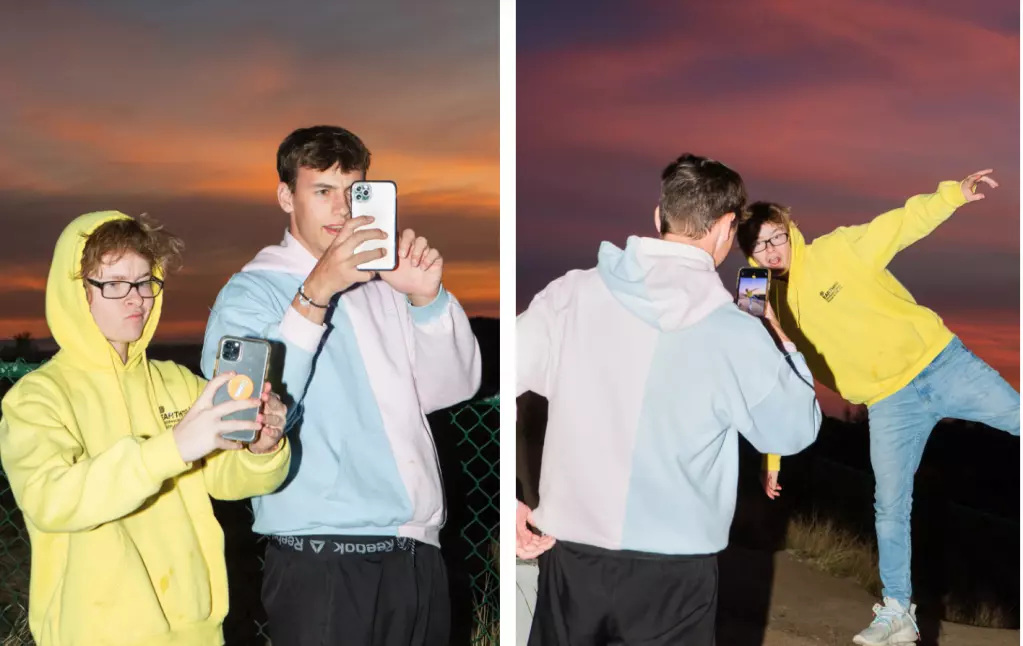
The Entry of Snapchat in 2011:
Snapchat, the multimedia messaging app that has taken the world by storm, was launched in September 2011 by Evan Spiegel, Bobby Murphy, and Reggie Brown. The app was initially designed as a way for users to share photos and videos that disappeared after a few seconds. This unique feature quickly made Snapchat popular among young adults and teens, who saw it as a fun and discreet way to share their daily lives with friends.
When Snapchat was first introduced, its founders faced a daunting challenge to get their app noticed amidst stiff competition from well-established social media platforms like Facebook and Twitter. However, Snapchat’s unique features and user-friendly interface helped it stand out from the crowd, and it quickly gained a loyal following. Today, Snapchat has over 280 million daily active users and is used by people around the world to share photos and videos, play games, and connect with friends and family.
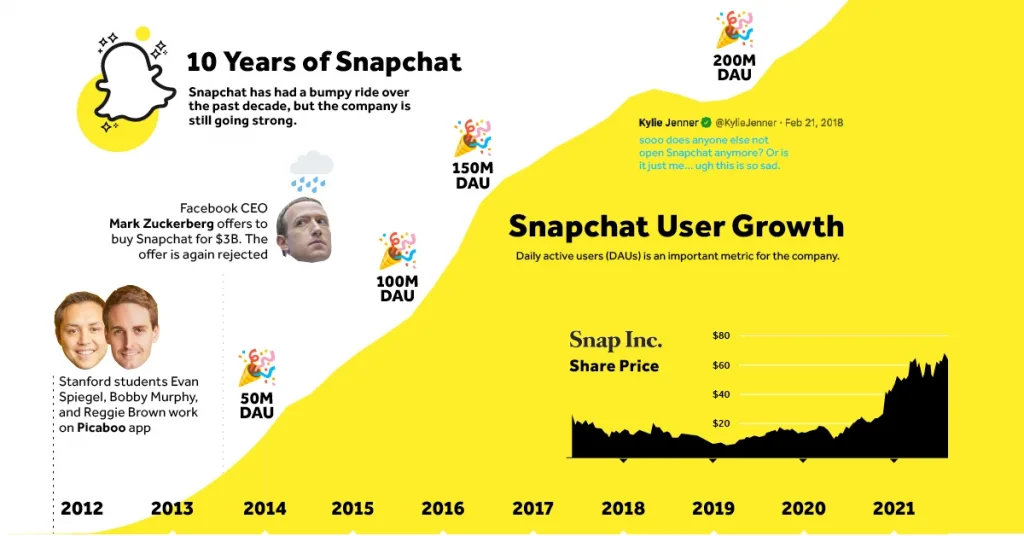
The Rise of Snapchat’s Popularity:
Snapchat’s popularity can be attributed to a variety of factors that make it a unique and engaging platform. One of the key features that sets it apart is its ephemeral nature, which allows users to share photos and videos that disappear after a short period. This creates a sense of excitement and spontaneity for users and makes Snapchat a fun place to spend time. The platform’s user-friendly interface and emphasis on visual content, such as photos and videos, also appeal to younger audiences who are increasingly drawn to more visual forms of communication. Additionally, Snapchat’s constant innovation and addition of new features, such as filters, lenses, and gaming, has helped it stay relevant and maintain its popularity among users.
Another key factor in Snapchat’s popularity is its user-friendly interface, which makes it easy for users of all ages to navigate and use the app. The platform’s emphasis on visual content, such as photos and videos, also appeals to younger audiences who are increasingly drawn to more visual forms of communication. Additionally, Snapchat’s constant innovation and addition of new features, such as filters, lenses, and gaming, has helped it stay relevant and maintain its popularity among users.
Overall, Snapchat’s success can be attributed to its unique features, engaging user experience, and constant innovation. As the social media landscape continues to evolve, Snapchat will need to continue to adapt and innovate in order to maintain its position as one of the most popular and engaging platforms for users around the world.
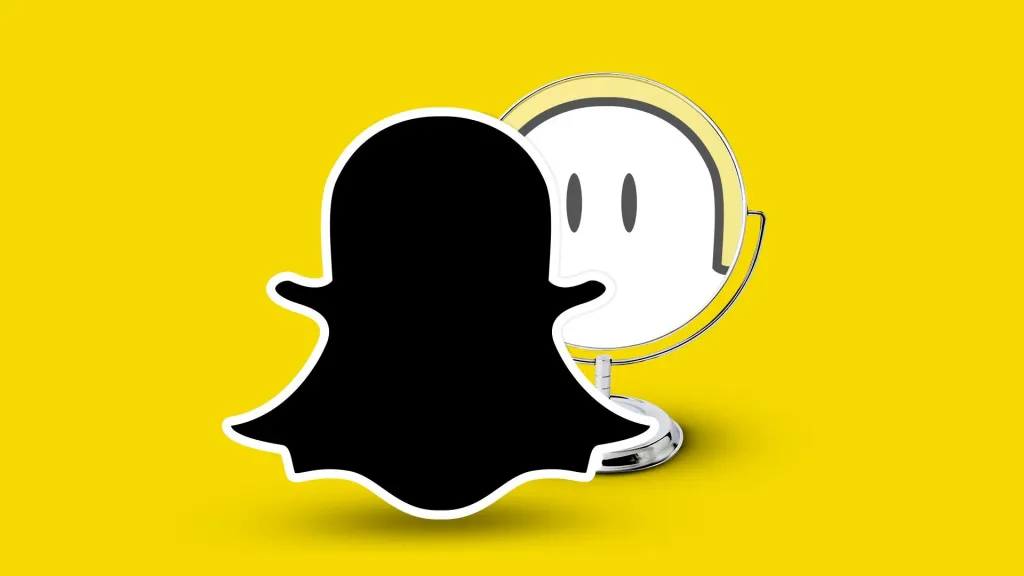
A Look Back at Snapchat’s Early Days:
In addition to the disappearing messages feature, Snapchat’s early days were characterized by the app’s focus on privacy and user control. Unlike other social media platforms at the time, Snapchat did not have a public newsfeed, and users could only view content from people they added as friends. This helped to create a more intimate and private social experience, which resonated with young users who were concerned about their privacy online.
Another important aspect of Snapchat’s early days was its focus on user-generated content. The app’s founders believed that user-generated content was more authentic and engaging than content created by brands or celebrities, and so they encouraged users to share their own content and express themselves through the app. This approach helped to create a vibrant and engaged community of users who felt a sense of ownership over the platform and were more likely to stay loyal to Snapchat even as other social media platforms emerged.
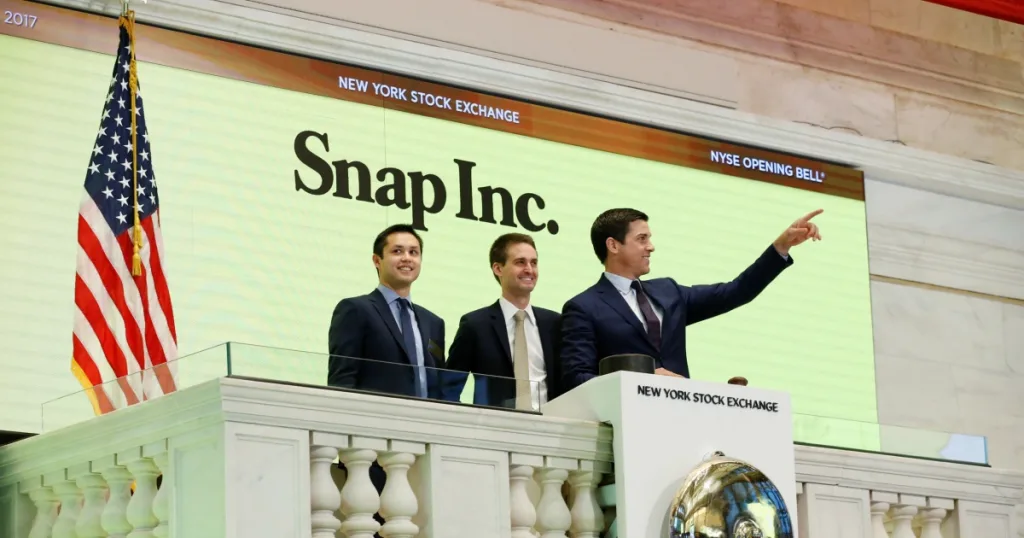
Founding of Snapchat by Spiegel, Murphy, and Brown:
Snapchat, the multimedia messaging app that has taken the world by storm, was founded by Evan Spiegel, Bobby Murphy, and Reggie Brown in 2011. The idea for the app came about while the trio was studying at Stanford University, and they initially named the app “Picaboo” The app was designed as a way for users to share photos and videos that disappeared after a few seconds, making it a fun and discreet way to share moments with friends.
Before Snapchat’s birth, Spiegel and Murphy had developed “Future Freshman” a similar app that failed to gain traction. However, when Brown joined the team, they decided to give another shot at building a disappearing messaging app, and thus Snapchat was founded. Despite facing competition from established social media platforms like Facebook and Twitter, Snapchat’s innovative features and easy-to-use interface helped it stand out, earning a loyal following among young adults and teens. Today, Snapchat has evolved into a social media giant with more than 280 million daily active users.
In the early days of Snapchat, Spiegel, Murphy, and Brown faced several challenges, including the need to secure funding to develop and market their app. They were initially rejected by several investors, but they eventually secured $485,000 in seed funding from Light speed Ventures. The founders also had to navigate the legal challenges that arose from the app’s disappearing messages feature, which raised concerns about privacy and security. Despite these challenges, the trio persisted, and their determination paid off, making Snapchat one of the most popular and engaging social media platforms in the world.
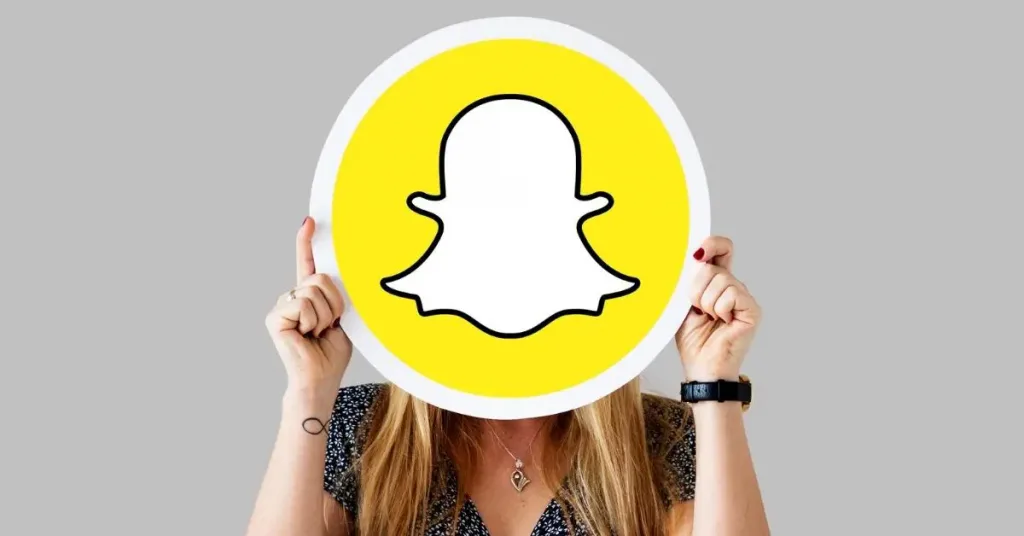
The Rise of Snapchat:
Snapchat burst onto the scene in September 2011 with its unique selling point: disappearing messages. Its user-friendly interface and focus on photo and video sharing quickly caught the attention of young adults and teenagers, despite facing fierce competition from social media giants like Facebook and Twitter. The app’s founders, Evan Spiegel, Bobby Murphy, and Reggie Brown, worked hard to differentiate Snapchat from its competitors and quickly gained a loyal following.
In its early days, Snapchat’s focus was on individual messaging, and the app lacked many of the features it has today. However, its popularity continued to grow, and it began to attract investors. To stay relevant and keep users engaged, Snapchat’s founders added new features like filters and lenses. Today, Snapchat is a major player in the social media landscape, boasting over 280 million daily active users. Its initial release was met with positive reception and set the stage for its continued success.

Snapchat’s Early Features:
One of Snapchat’s primary features, disappearing messages, was a significant factor in its early success. The app’s users could send messages that would vanish after being viewed, providing an added layer of privacy and security. This feature was particularly attractive to young adults and teenagers, who value privacy and control over their online presence. The ease of communication without leaving a permanent digital footprint was a new and exciting concept for social media users.
Snapchat also introduced filters and lenses early on, which allowed users to add creative and fun effects to their photos and videos. Filters included text, emoji’s, and stickers, while lenses used augmented reality technology to create interactive effects. These features made Snapchat stand out from other social media platforms, and young adults and teenagers were drawn to the app’s unique creative expression capabilities. The combination of disappearing messages and fun filters and lenses, along with a user-friendly interface, helped Snapchat quickly gain a dedicated following and evolve into a significant player in the social media land scape.
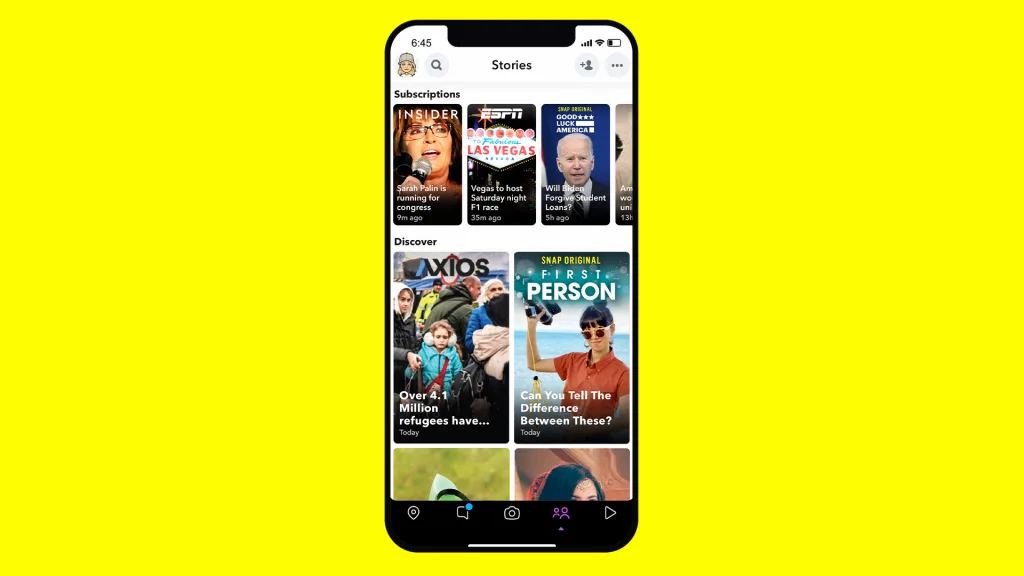
The Introduction of Snapchat Stories:
Snapchat Stories was first introduced in October 2013, and it quickly became one of the app’s most popular features. The feature allows users to share a series of photos and videos that are available for 24 hours before they disappear. This feature was a game-changer for Snapchat, as it allowed users to share more than just individual messages, but also a more complete and chronological narrative of their day. Snapchat Stories was an instant hit among users, who loved being able to share more of their daily lives with their friends.
Snapchat Stories also paved the way for businesses to start using the app for marketing purposes. Brands quickly recognized the potential of the feature and started creating their own Stories to engage with their audiences. With features like swipe-up links and shoppable tags, businesses were able to drive traffic and sales directly from their Snapchat Stories. The introduction of Snapchat Stories was a major turning point for the app, as it helped it evolve from a simple messaging app to a full-fledged social media platform. Today, Stories are a key part of Snapchat’s identity and are a major reason why it continues to be a popular platform among young adults and teenagers.
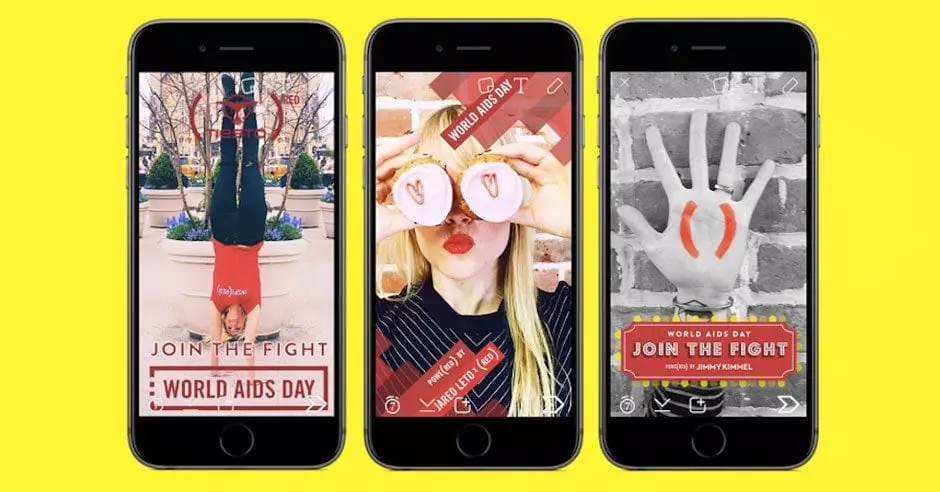
Introduction of Geo filters and Lenses in Snapchat:
Snapchat’s introduction of geo filters and lenses marked a significant shift in the platform’s focus, and these features helped to further expand the app’s user base. Geo filters were first introduced in 2014, and they allowed users to add custom graphics and text to their photos and videos based on their current location. This feature allowed users to share their experiences with friends and followers in a more immersive and engaging way. Geo filters quickly became popular, and Snapchat began offering custom geo filters for events and businesses, which helped to attract new users and advertisers to the platform.
In 2015, Snapchat introduced lenses, which used augmented reality technology to add interactive effects to photos and videos. Lenses allowed users to add animated filters to their faces and surroundings, creating a new level of interactivity and entertainment on the platform. The introduction of lenses was a major milestone for Snapchat, as it helped to differentiate the app from competitors and further cemented its position as a leader in mobile communication and social media. Today, lenses continue to be a popular feature on Snapchat, with new lenses being added regularly to keep users engaged and entertained.

Integration with Other Social Media Platforms:
Snapchat’s popularity continued to grow, and the company recognized the importance of integrating with other social media platforms. In 2014, Snapchat introduced the ability to share snaps on other social media platforms, such as Facebook and Twitter. This allowed users to share their Snapchat content with a wider audience, and it helped to increase the app’s visibility and attract new users.
In addition to sharing on other platforms, Snapchat has also integrated with other apps and services. For example, in 2018, Snapchat announced a partnership with Shazam, a popular music recognition app. This integration allows users to identify songs playing in the background of their snaps and add them to their playlists. Snapchat has also partnered with Bitmoji, a popular personalized emoji app, allowing users to create custom Bitmoji stickers and use them in their snaps. These integrations have helped to keep Snapchat relevant and engaging for users, while also providing new opportunities for the company to generate revenue.
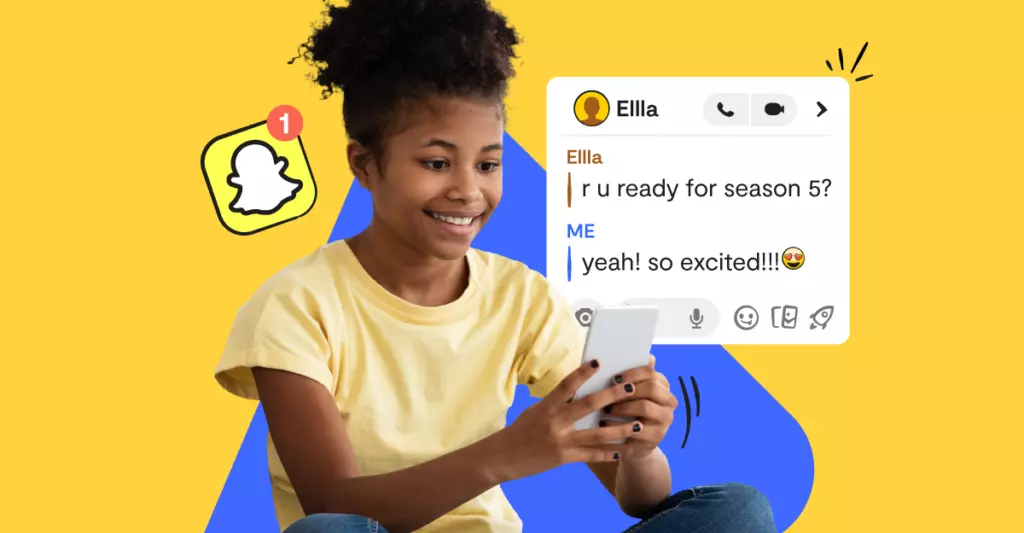
The Rise of Snapchat in Popular Culture:
Snapchat’s impact on popular culture, particularly among younger audiences, cannot be denied. The app’s unique features and emphasis on visual communication have made it an important tool for celebrities and influencers to connect with their fans. Snapchat’s popularity has led to the creation of “Snapchat Stories” by celebrities, which are compilations of photos and videos that give fans a glimpse into their daily lives. Many celebrities have used Snapchat to share behind-the-scenes footage of their work, as well as personal moments with their fans. This has helped to humanize these public figures and create a more personal connection between them and their fans.
Snapchat has also become a popular tool for marketers and advertisers to reach younger audiences. The app’s user base is predominantly made up of teenagers and young adults, who are notoriously difficult to reach through traditional advertising channels. Snapchat’s unique features, such as geo filters and lenses, allow brands to create engaging and interactive campaigns that resonate with this demographic. This has led to the creation of sponsored lenses and filters, as well as partnerships with influencers to promote products and services. Snapchat’s integration with other social media platforms, such as Instagram and TikTok, has also helped to expand its reach and influence in popular culture.
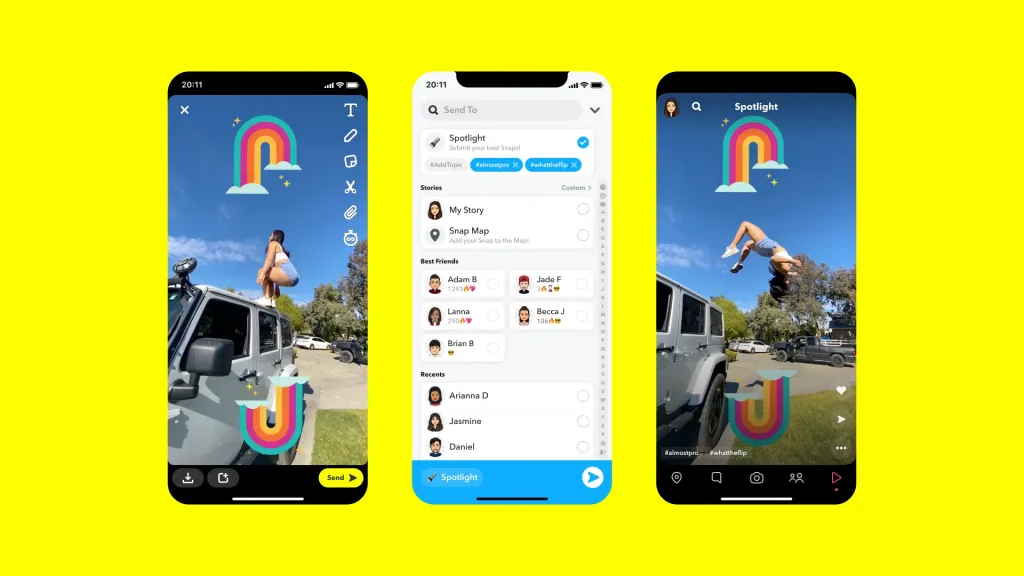
Snapchat’s Evolution to Present Day:
Snapchat has come a long way since its launch in 2011, evolving and adapting to meet the changing demands of its users and the competitive social media landscape. One of the most significant changes came in 2013 when Snapchat introduced Stories, allowing users to share snaps with their friends that disappear after 24 hours. This feature was a game-changer for Snapchat and a precursor to similar features on other social media platforms. Snapchat also continued to innovate with the introduction of lenses in 2015, which allowed users to add fun filters and animations to their snaps using augmented reality technology. The app’s user base continued to grow, and it became a cultural phenomenon, with celebrities and influencers using it to connect with their fans.
In 2017, Snapchat underwent a significant redesign, aimed at simplifying the app’s user interface and making it more intuitive. However, the redesign was met with a backlash from users, who found it confusing and less user-friendly. As a result, user engagement on the app declined, and Snapchat was forced to revert to its previous design. Despite this setback, Snapchat continued to evolve, introducing new features like Snap Maps, which allows users to share their location with friends, and Bitmoji, which enables users to create personalized avatars. The app also expanded into the world of e-commerce with the introduction of shoppable AR lenses, allowing brands to sell products directly through the app. Today, Snapchat remains one of the most popular social media platforms, with a loyal user base and a reputation for innovation and creativity.
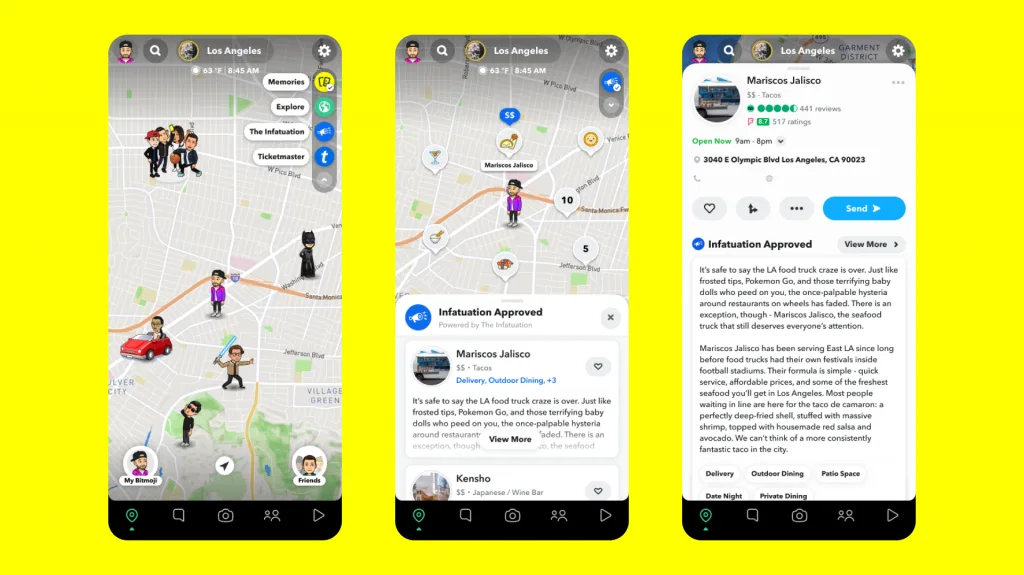
The Launch of Snap Map and Discover:
Snapchat has continually evolved its platform to keep up with the changing social media landscape. In 2017, it launched two major features: Snap Map and Discover. Snap Map is a location-based feature that allows users to see where their friends are on a map and share their own location. Users can also see events happening in their area and view stories from locations around the world. While the feature was praised for its innovation and interactivity, it also raised concerns about privacy and safety. Snapchat responded by implementing controls to allow users to choose who can see their location and providing the option to go into “Ghost Mode” to remain completely invisible on the map.
Discover, on the other hand, is a content platform that allows media companies to create and distribute their own content on Snapchat. Users can swipe through articles, videos, and other multimedia content from publishers such as BuzzFeed, ESPN, and Vice. Discover has been a popular way for media companies to reach younger audiences, and Snapchat has worked closely with its publishing partners to ensure that the content is engaging and relevant. Discover has also helped Snapchat differentiate itself from other social media platforms by providing a unique, curated experience for its users.
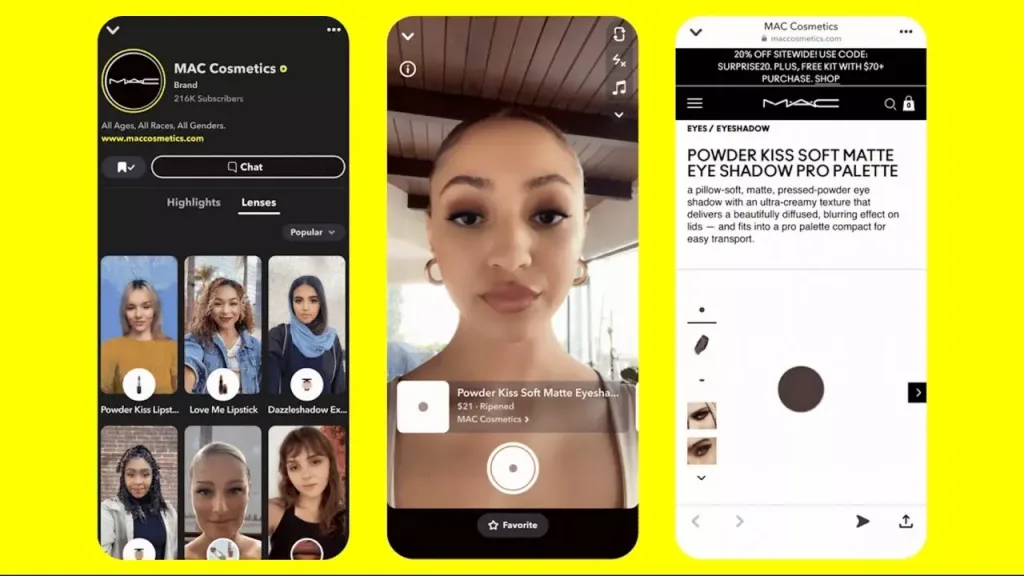
Integration of Augmented Reality and Gaming:
Snapchat has been at the forefront of innovation in the tech industry with its integration of augmented reality and gaming. The app’s filters and lenses have been popular among users for several years, allowing them to add fun and creative effects to their photos and videos. With the introduction of augmented reality (AR) lenses, Snapchat has taken this feature to the next level. AR lenses use the user’s camera to create interactive 3D animations that appear to be in the real world. This technology has been used in various ways, from allowing users to try on virtual makeup to creating immersive experiences for movie promotions and events. Snapchat’s AR technology has set it apart from other social media platforms and has been a driving force in its continued growth and success.
In addition to AR, Snapchat has also integrated gaming into its platform. This move was a strategic one, as gaming has become a significant source of revenue for the tech industry. The app’s gaming feature, called Snap Games, was launched in 2019 and offers a variety of multiplayer games that users can play with their friends directly on the app. Snap Games has been popular among users, with games such as Bitmoji Party and Snake Squad becoming fan favorites. The integration of gaming has not only increased user engagement but has also opened up new revenue streams for Snapchat. With the addition of AR and gaming, Snapchat has evolved into a multifaceted platform that offers users a unique and engaging experience.

Snapchat’s Cultural Impact on Social Media:
Snapchat’s inception in 2011 marked a turning point in social media and pop culture. With features like ephemeral messaging, filters, and lenses, Snapchat distinguished itself from other social media platforms and amassed a loyal user base of over 280 million daily active users. Its interactive and creative features have transformed the way people communicate online, especially among younger generations.
Furthermore, Snapchat has become an integral part of the marketing and advertising world. Its ability to reach younger audiences has made it a valuable tool for brands looking to connect with the next generation of consumers. Snapchat’s ad formats, including sponsored lenses, filters, and snap ads, have proven to be effective in capturing users’ attention and driving engagement. With the rise of e-commerce on social media, Snapchat has also integrated shopping features, such as shoppable AR lenses and in-app stores, providing a seamless shopping experience for its users.

The Impact of Celebrities and Influencers on Snapchat’s Popularity:
Snapchat has become a go-to platform for celebrities and influencers to connect with their fans and share their daily lives. Their large followings have played a crucial role in promoting the app, increasing its user base, and generating buzz. One of the most effective ways that celebrities and influencers have promoted Snapchat is through sponsored content. Brands have recognized the app’s potential for marketing and have partnered with influencers to reach their audiences. Celebrities and influencers have also used the app to promote their own products and projects, such as new album releases or upcoming movie premieres. This type of organic promotion has helped build a loyal following on the app and contributed to its growth.
Moreover, celebrities and influencers have also used Snapchat to support social causes and promote awareness campaigns. They used their influence to raise funds for charities and spread awareness about important issues. It helped showcase Snapchat as a platform not only for entertainment but also for social good. With its ability to reach a huge audience, celebrities and influencers have played an important role in shaping Snapchat’s identity and establishing it as a platform that can be used for more than just communication and entertainment.
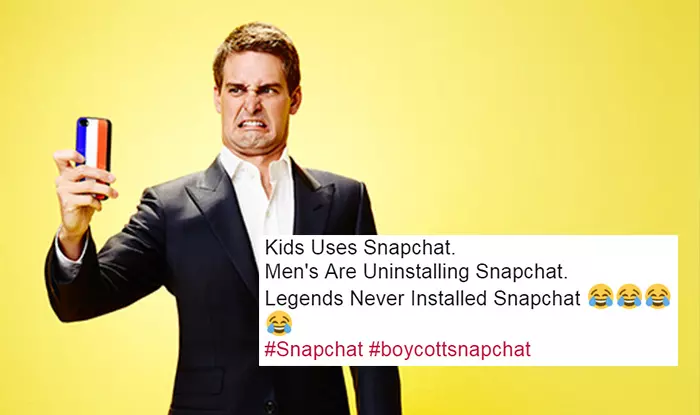
Controversies Faced by Snapchat:
Like any social media platform, Snapchat has faced its fair share of challenges and controversies over the years. One of the most notable controversies was the 2018 redesign, which was widely criticized for being confusing and difficult to navigate. This resulted in a decrease in user engagement, and the company had to make several changes to the app to address users’ concerns. The redesign debacle taught Snapchat an important lesson about the importance of listening to user feedback and responding promptly to criticism.
Another challenge that Snapchat has had to contend with is its role in spreading fake news and misinformation. The platform has been used to disseminate false information, such as conspiracy theories and hoaxes, and in 2020, the company faced criticism for promoting fake news about COVID-19. In response, Snapchat implemented measures to combat the spread of misinformation, including partnering with fact-checking organizations and limiting the spread of unverified information. Despite these challenges, Snapchat has remained a popular platform among younger generations, and its continued success will depend on how it navigates future controversies and adapts to changing user needs.
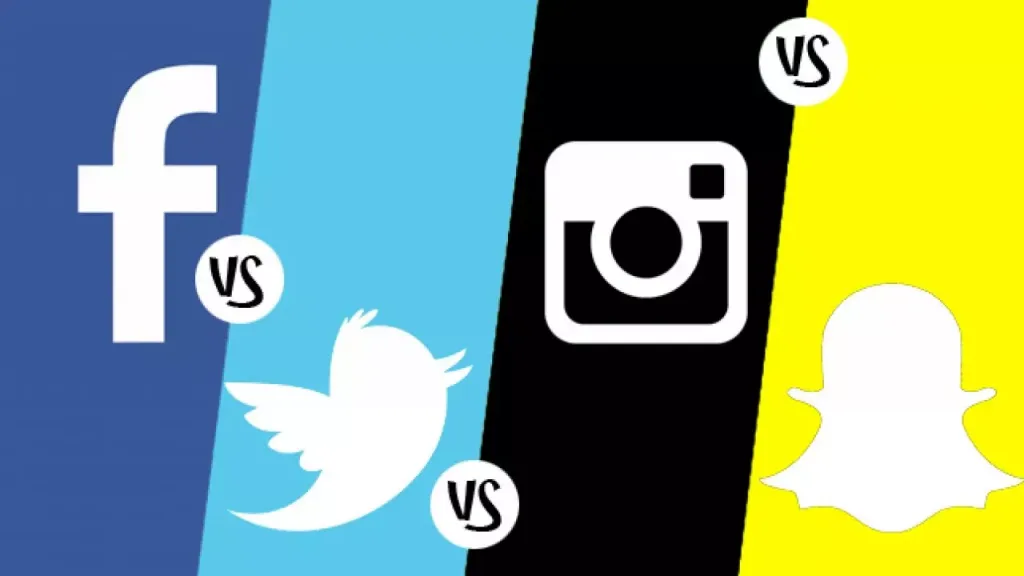
Snapchat Competes with Other Social Media Platforms:
Snapchat has been at the forefront of social media innovation since its inception in 2011. However, in recent years, the platform has faced stiff competition from other social media giants such as Instagram and TikTok. The launch of Instagram Stories in 2016 and the popularity of TikTok among younger generations have resulted in a decline in Snapchat’s user growth and engagement. To stay relevant, Snapchat has had to adapt and innovate, introducing new features like Snap Map and Snap Originals to retain users. The company has also focused on expanding its advertising offerings, with sponsored lenses, filters, and content becoming a significant source of revenue. Despite the challenges, Snapchat has managed to maintain a dedicated user base, especially among younger generations.
One of the most significant challenges that Snapchat has faced is the spread of fake news and misinformation on its platform. The company has been criticized for promoting conspiracy theories and hoaxes, and for not doing enough to combat the spread of unverified information. In response, Snapchat has implemented several measures to address the issue, including partnering with fact-checking organizations and limiting the spread of unverified information. However, the battle against fake news and misinformation is an ongoing one, and Snapchat will need to continue to adapt its strategies to ensure the platform remains a reliable source of information for its users. Despite the controversies and challenges, Snapchat’s unique features and focus on privacy and security continue to differentiate it from other social media platforms, and it will be interesting to see how the platform continues to evolve in the years to come.

Conclusion:
In conclusion, Snapchat has come a long way since its launch in 2011 and has had a significant impact on the social media landscape. From its unique features, such as disappearing messages and filters, to its innovative approach to augmented reality and e-commerce, Snapchat has constantly pushed the boundaries of what is possible on a social media platform. The app’s influence can be seen in the way other platforms have adopted similar features, and its role in shaping digital marketing and advertising is undeniable. However, Snapchat has also faced its fair share of challenges, particularly in terms of privacy concerns and competition from other social media platforms.
Looking to the future, it will be interesting to see how Snapchat continues to evolve and adapt to the changing needs and expectations of its users. The integration of augmented reality and gaming, as well as the expansion of e-commerce features, are promising developments that could potentially drive the app’s growth and engagement. However, Snapchat will also need to address ongoing privacy concerns and find ways to stay relevant in a crowded and competitive social media landscape. Overall, Snapchat’s journey thus far has been marked by innovation, creativity, and resilience, and it will be exciting to see where it goes next.




